(Article contributor: Pragya Raut, architect from Nepal. Inputs of the story highlights the role of bamboo as a promising housing material while her interaction with architect Ewe Jin Low about his Kamsia House)
Located in Ubud, a city which is very much on the way of being the bamboo capital of Indonesia, Kamsia House is a marvelous green structure and private residence designed by Mr. Ewe Jin Low, an architect and a bamboo advocate.
Kamsia House is a pavilion built with almost all bamboo, locally sourced and constructed by Wayan, Eka Setiawan and their team from the bamboo artisan village of Belega. The same team who built many of the structures in Green School and Green Village of Bali, Indonesia.
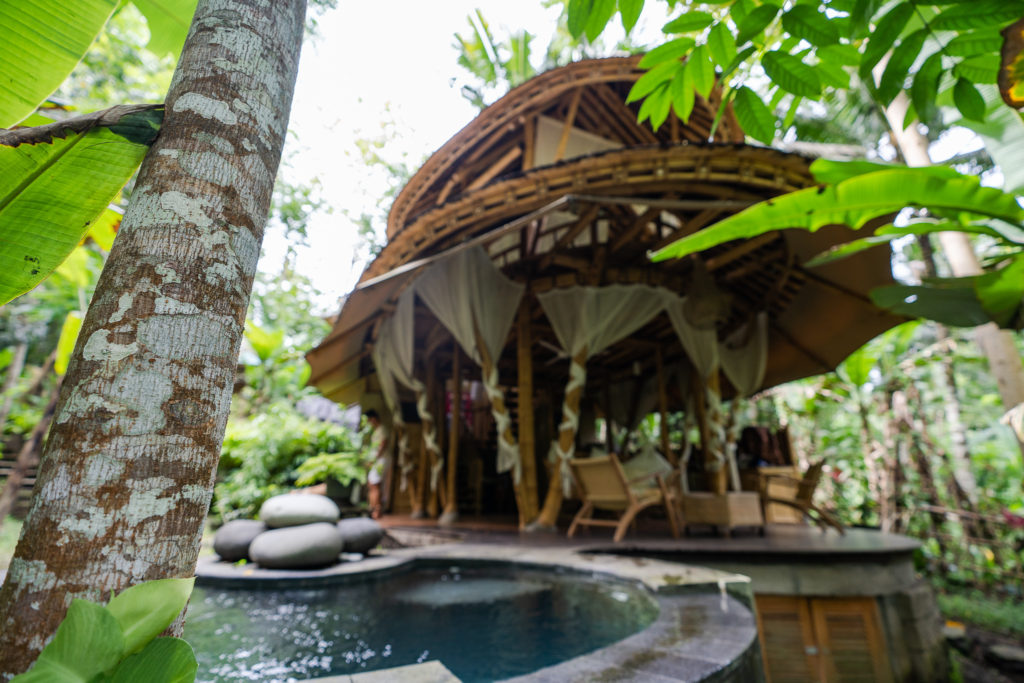
Ewe Jin Low himself worked as a Lead Architect for Ibuku. This Bali based bamboo design and construction firm is world renowned for re-branding Bamboo as the leading sustainable material of the future. As the architect for Ibuku, Jin Low mastered the skills of Bamboo technology and designed, directed & turned many of these esteemed amazing projects into reality.
“It is one thing to write and profess about bamboo based on theory but it is another to have the opportunity to practically and personally design, construct and live in a bamboo building.” Says Ewe Jin Low
As a space he imagined for his own usage, Kamsia House holds special place in his own bamboo journey & exploration. The house is two level post and beam structure, constructed with Dendrocalamus asper (local name – bambu petung) and Gigantichloa apus (local name – bambu tali) which are commonly available Indonesian bamboo species.
Oriented along east-west direction in site to maximize air movement in the building, the house is an open , wall-less, single room width plan that spreads in harmony with existing terrains. High floor to floor and floor to roof span also remarkably contributes the cross ventilation. The ground floor has a living room, kitchen, washroom and a nice deck facing the river whereas the upper floor houses a bed room.
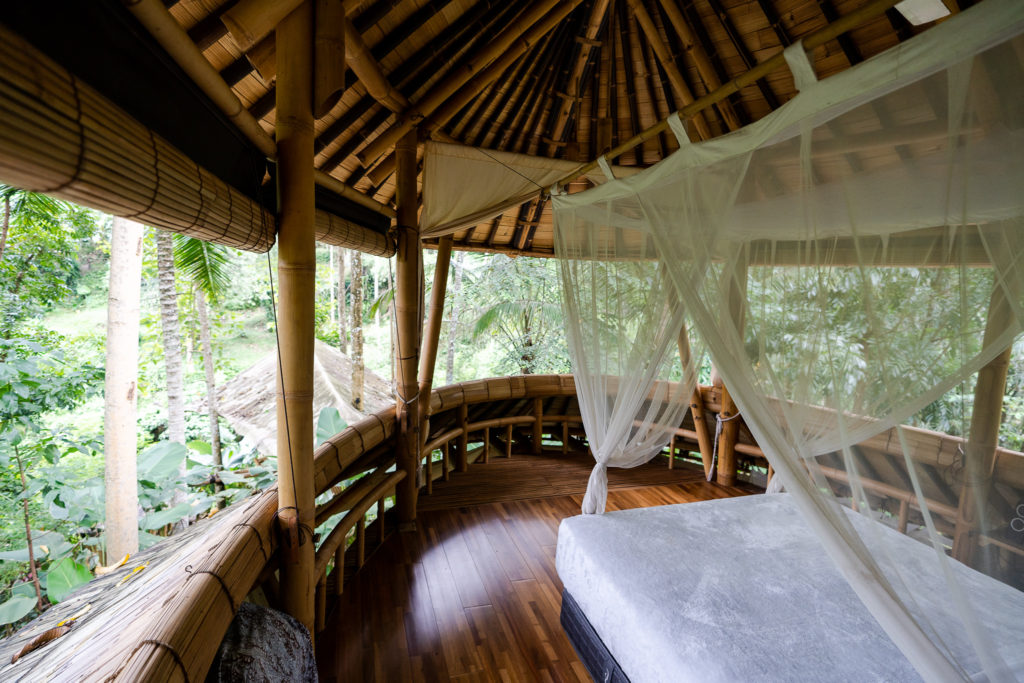
Inspired from the shape of a squid, the house is organically shaped and avoids boxy or rigid square forms. The front part of house is a pointed leaf roofed that rises up. Towards the rear end of the roof, an acrylic triangle is inserted for daylight purpose. The big roof overhangs and extra skirt roofs help to throw off the rain and provide shade from the sun.
From ceilings to staircase and the floors, everything is beautifully created with bamboo adopting different styles & technologies. Bamboo blinds and fabric curtains are used for controlling privacy and also as a shut down for the evening. Windows, doors and screens have been planned in for future addition between the bamboo columns,if required, but now the whole house is still open sided – a total delightful acknowledgement to the existing nature that includes forest and nearby bamboo plantation.
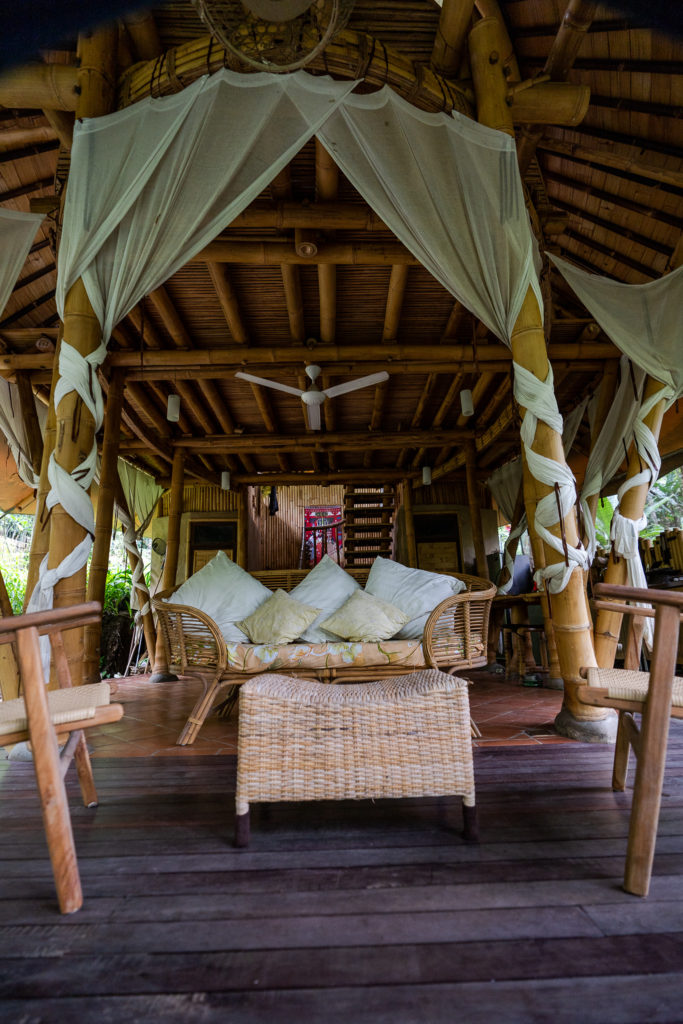
Bamboo as a perfect ecological alternative
Bamboo is a grass plant that has over 1450 species and can be found in almost every range of geography of the world. Their shapes, sizes & volumes differ according to the place they grow up. Enlisted as the fastest growing plant in Guinness Book of world records, Bamboo as a construction material has almost every capacity to do what other contemporary materials can make happen. And within three-four years of planting, we can completely replenish what we used for construction. This is the reason why bamboo is gaining popularity as perfectly sustainable material among advocates of sustainability practice.
The history of bamboo dates long back and was used most widely in tropical regions of the world for more than thousands of years. But still many will confuse it with a modern material. This is because due to the lack of knowledge on proper treatment, the old bamboo constructions usually got attacked by insects, weakened and faded along with time leaving no evidences. Also, often people hesitated to make houses from it unless they were very poor and had no other economic options. Until some time ago and even now in many third world countries, bamboo is famous as a poor man’s timber.
The findings of modern technologies to treat bamboo with Borax solutions and other special strategies are increasing its longevity and making bamboo the new choice of artisans, architects and builders. A bamboo structure made of well-treated bamboo can last for more than thirty years if we regularly inspect, maintain and replace its bamboo components when required.
Bamboo gives the strongest timbers. The fibers of bamboo are three times stronger than structural steel. The hollow tubular characteristics of bamboo makes it four times efficient than it would be if it were solid. Similarly, the nodes of bamboo prevent it from buckling. It has the enormous tensile strength like of steel and compressive strength of concrete.
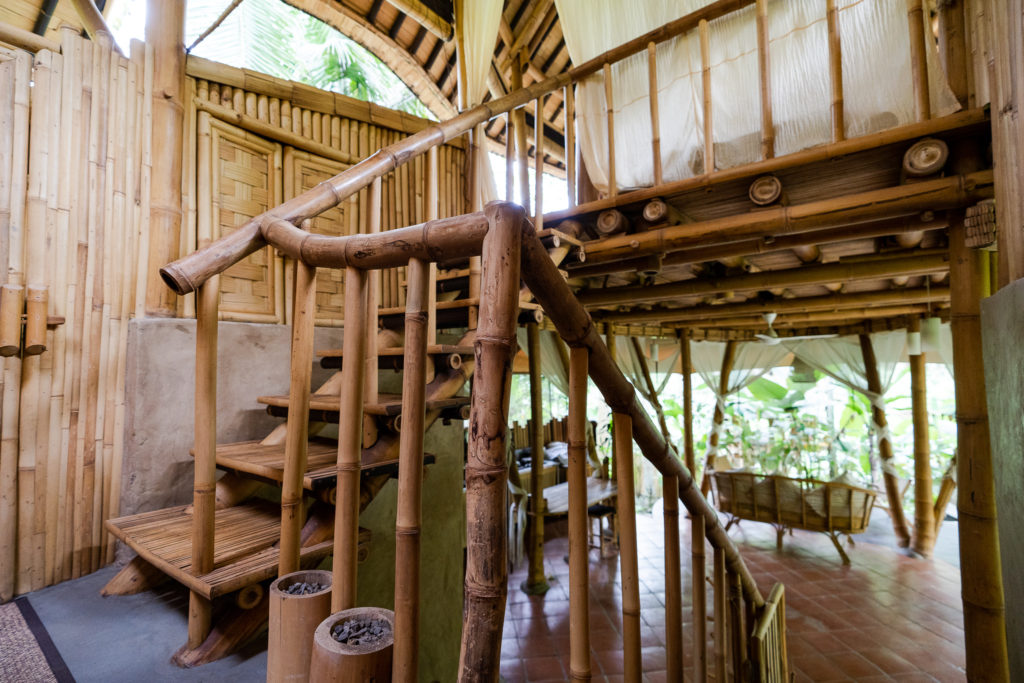
It has proved to be very handy not only in terms of large disaster relief projects such as Nepal Earthquake, Vietnam floods and for Burmese refugees in Thailand etc but also has a wide ranges of applications as an essential daily material for food, housing ,furniture, construction ,kitchenware, storage etc.
Why is bamboo promising for the environment?
Among the large number of options for materials & technologies available to meet our modern needs of housing, bamboo tapping into carbon trading and reforestation is the reason why we as conscious humans might need to rebound its usage. The construction industry extracts & exploits the natural resources causing negative impacts in climate. They release the green houses gases and also unlock the energy of fossil fuels into the atmosphere. With the plantation of bamboo, we can optimize its fast growing character as a very useful resource as it is capable of quickly capturing & sequestering atmospheric carbon. Bamboo forests are capable of absorbing 50 tons of carbon dioxide per hectare per year. Also, they release 30% more oxygen to the atmosphere compared to other plants.
Bamboo can survive on the worst kind of polluted soil, absorb the pollutants and make them clean. Thus they can be used to fix the soil quality. Bamboos are also capable of improving the quality of water and absorb human urine. Hence they are referred to plant for waste water treatment.
The Challenges
As a cheaply available material growing everywhere, bamboo suffers from stigmatization and underestimation from general public especially in Asia and third world countries. The lack of knowledge on its benefits and also on the ways of increasing its performance are the main reasons behind it. Similarly, unlike of other man made materials, there is no particular known & easily guided structural engineering computations for Bamboo as no two Bamboos are the same. So if one wishes to construct a long lasting bamboo structure, he/she should have sound a knowledge on bamboo itself and then on specific principles, techniques on design, construction and maintenance. There is also a huge gap in easy access to this knowledge too.
Kamsia House ; An ode to bamboo journey
Ar. Ewe Jin Low has a memorable experience of staying in the bed and not running out of house like his surrounding neighbors when a 6.8 magnitude of Earthquake stuck Bali in 2018. The 20 cm side to side movement lasting for more than 30 seconds shook his whole house but did not do a single damage to any joint or pole.
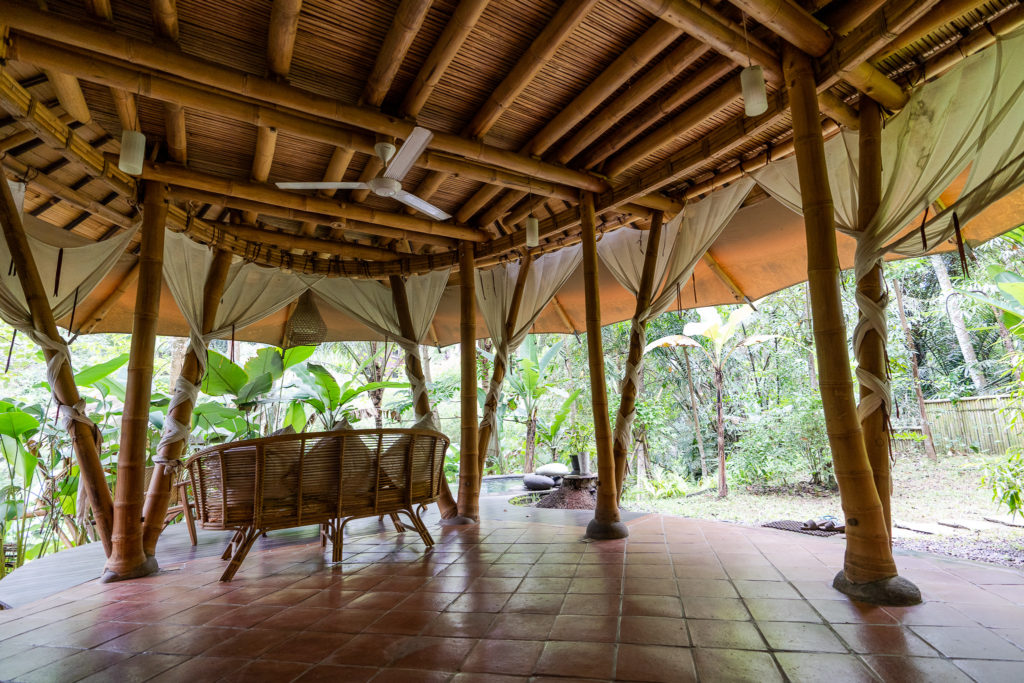
Graduated in 1983 in Architecture from University of Brighton, UK, Ewe Jin Low worked on conventional projects in England, SE Asia and Australia for over 30 years. He underwent a major shift in his work scope when he moved to Bali as Lead Architect for Ibuku some 5/6 years before. He is currently committed towards Bamboo design, training courses and advocacy through his own Melbourne based consultancy ‘TENTEN Design’ and also from his blog site ‘betterbamboobuildings.com’.
Ar. Ewe Jin Low is grateful for his experiences in Bali and his bamboo encounter so he decided to name his residence in Bali as Gratitude or Thanks. Kamsia in Hokkien language means ‘Gratitude’.
Disclaimer: Photo copyrights: Ar.Ewe Jin Low
Photo courtesy: www.betterbamboobuildings.com


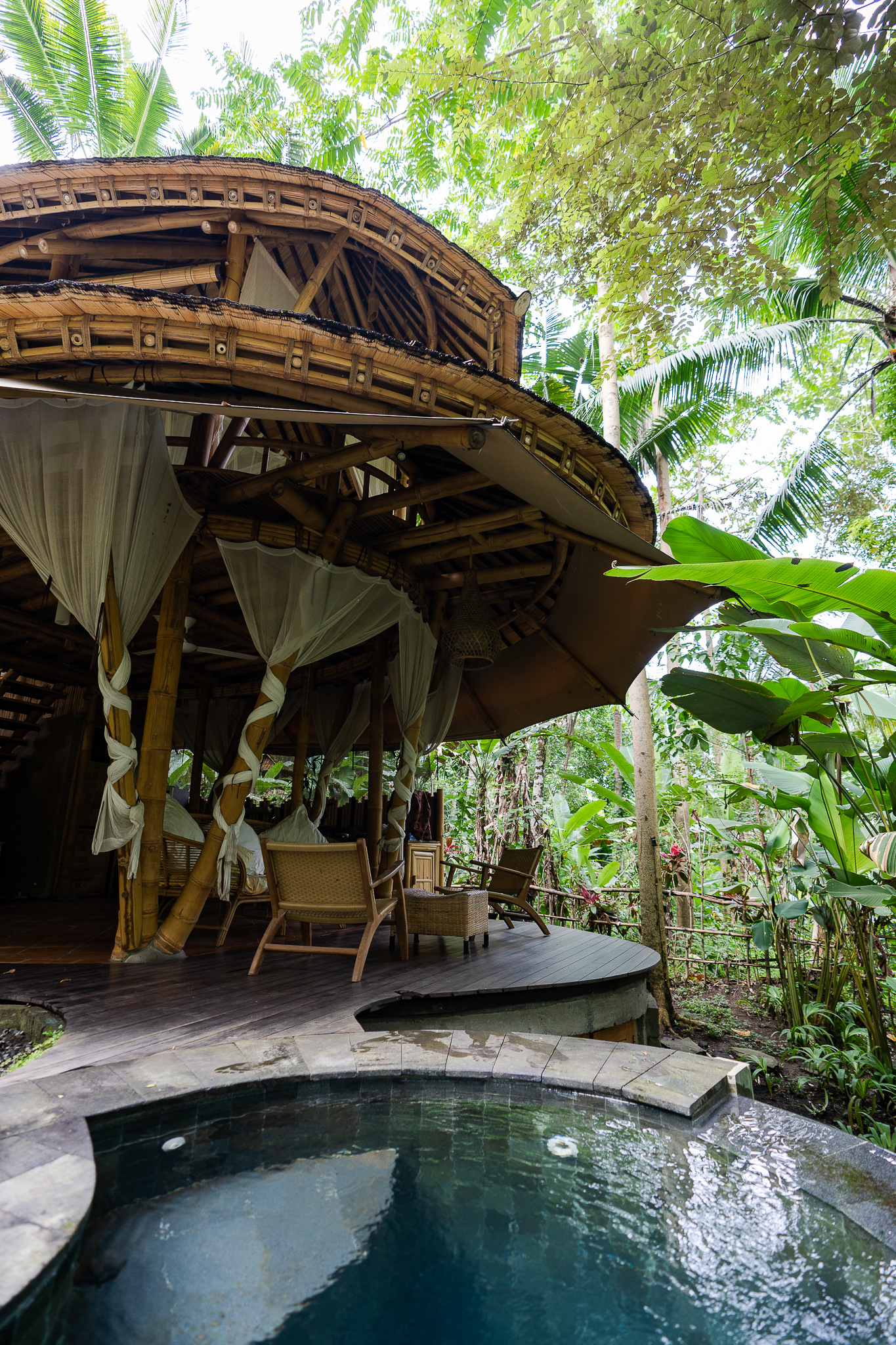
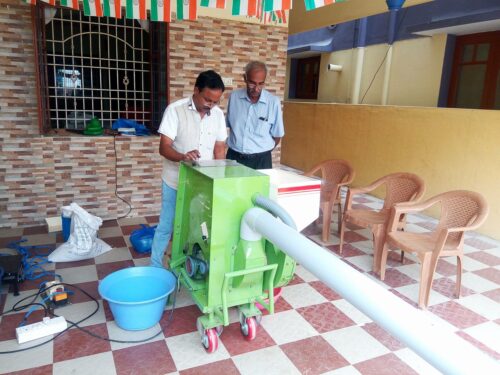
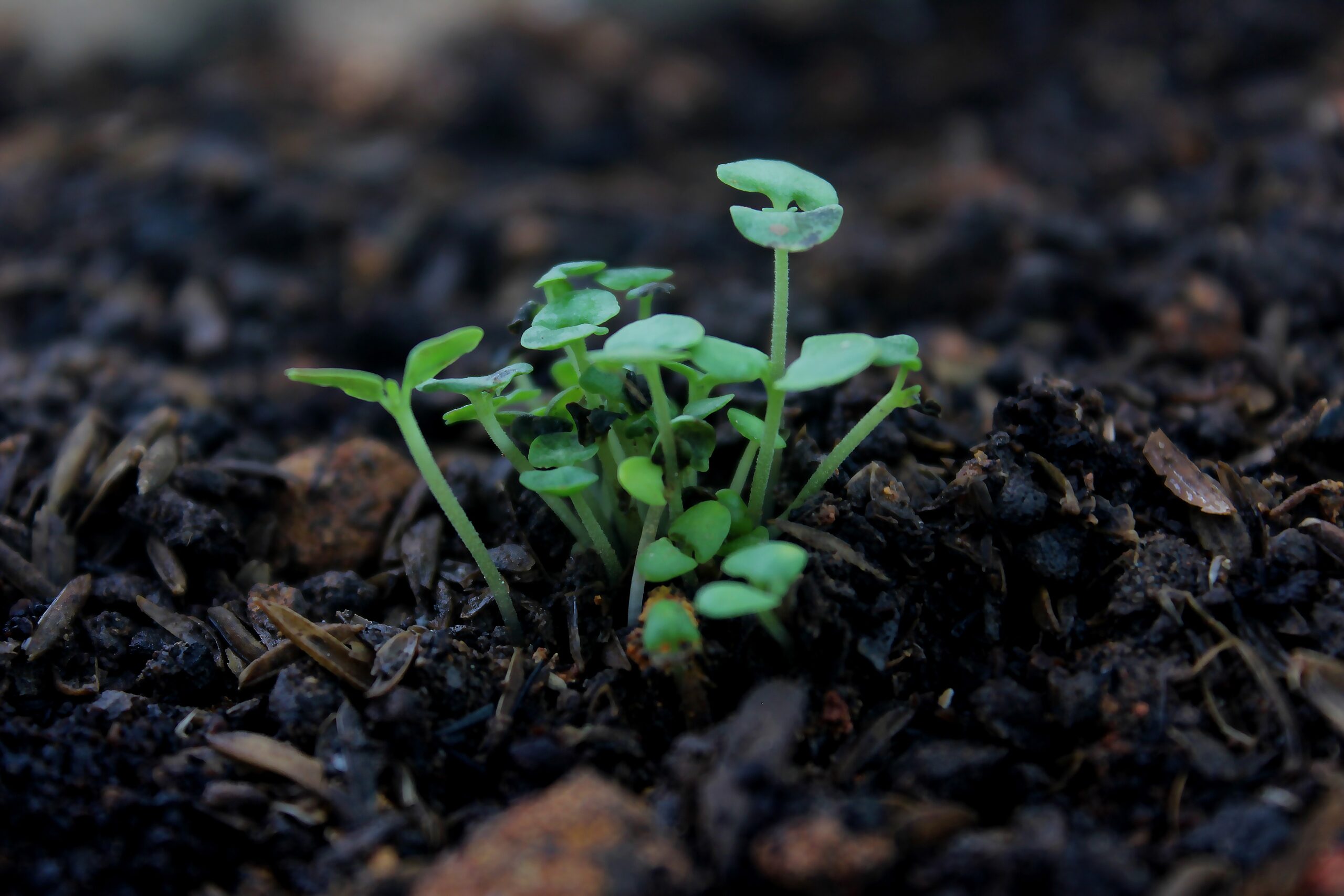
Hi, I am an avid reader of your blog! I really agree with this as I am currently employed as an MEP Engineer for an outsourcing company.